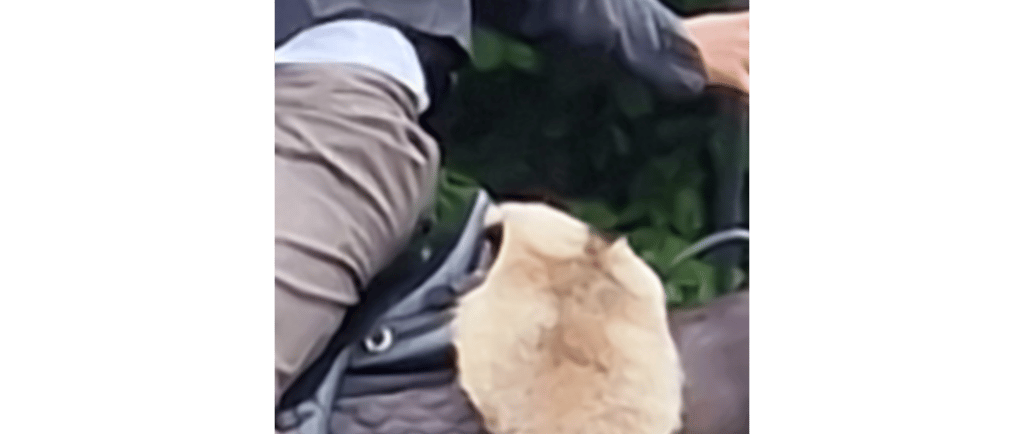Ever Wondered About That Flappy Thing Behind a Portuguese Saddle? Meet the Chairel!
iscover the secret behind a unique Portuguese riding accessory – the chairel. What is that flapping leather behind the saddle, and why do Portuguese riders still wear it today? Read about the history, purpose, and significance of the chairel in modern equestrian culture, and learn how this small detail symbolizes pride and tradition in Portuguese horsemanship.
WORKING EQUITATION


Ever Wondered About That Flappy Thing Behind a Portuguese Saddle? Meet the Chairel!
If you’ve ever watched Portuguese riders or caught a glimpse of Working Equitation competitions, you might have noticed something rather unique fluttering behind the saddle — two oval-shaped, furry leather pieces hanging from either side of the horse’s hindquarters. This curious accessory, often overlooked by casual observers, is called a chairel (pronounced shah-REL), and it carries a rich history rooted deep in Portuguese equestrian tradition.
What Exactly is a Chairel?
The chairel is a traditional piece of tack made from leather, typically goat or cowhide, with the hair often left on to give it a distinctive furry texture. These two symmetrical pieces attach to the back cinch — a strap that runs under the horse’s tail and secures the saddle in place — and hang loosely on each side of the horse’s rear. As the horse moves, the chairel flaps or “pleská” (a Czech term meaning “flaps” or “slaps”), creating a lively, eye-catching effect.
Practical Origins: More Than Just Decoration
While today the chairel is often admired for its aesthetic appeal, it originally served a very practical function. In the hot, dusty fields of Portugal, riders — often cattle herders or farmworkers — needed to protect their clothing from the rigors of daily work. The chairel acted as a shield against sweat, dirt, dust, and grime kicked up by the horse, especially protecting the rider’s trousers or skirts from the constant friction and mess.
The leather pieces also helped prevent the saddle’s back cinch from rubbing directly against the horse’s coat, offering some comfort and protection to both horse and rider. Its functional role made it an indispensable part of traditional Portuguese riding gear.
A Symbol of Heritage and Pride
Over time, the chairel evolved from a purely functional accessory into a symbol of Portuguese horsemanship and culture. It became an emblem of pride for riders, particularly those involved in disciplines that emphasize tradition, such as Working Equitation and rejoneo (Portuguese bullfighting on horseback).
In festivals, parades, and ceremonial occasions, the chairel adds an unmistakable flair and authenticity to the rider’s outfit. Its presence communicates respect for centuries-old customs and a deep bond between rider, horse, and heritage.
The Chairel Today: Tradition Meets Modernity
In contemporary equestrian circles, the chairel is cherished as a decorative element that complements the overall look of the traditional Portuguese saddle and attire. It’s usually carefully crafted to match the saddle’s leather, often in natural tones or dyed to coordinate with other gear.
In Working Equitation, a discipline that celebrates precision, style, and cultural expression, the chairel helps riders present a polished, historically grounded appearance. Despite its ornamental role, many riders still appreciate its original function and keep the tradition alive with authentic materials and designs.
Fun Facts About the Chairel
The word “chairel” has roots in Arabic, reflecting the Moorish influence on the Iberian Peninsula. It loosely translates to “protective cover.”
Not all Portuguese riders use chairel, but where it is seen, it often signals a connection to the southern regions of Portugal, such as Alentejo, where traditional horsemanship runs deep.
Some modern versions include synthetic materials or faux fur to mimic the traditional look while offering easier maintenance.
Why Should You Care About the Chairel?
Beyond its practical and decorative uses, the chairel represents a living link to Portugal’s rich equestrian history. It embodies the blend of functionality, artistry, and cultural pride that defines Portuguese riding. For anyone fascinated by horses, history, or traditional crafts, understanding accessories like the chairel opens a window into the stories and values that shape equestrian life in Portugal.
So next time you see a Portuguese rider with those charming flapping leather pieces behind the saddle, you’ll know you’re witnessing a small but powerful symbol of a proud, centuries-old tradition.
